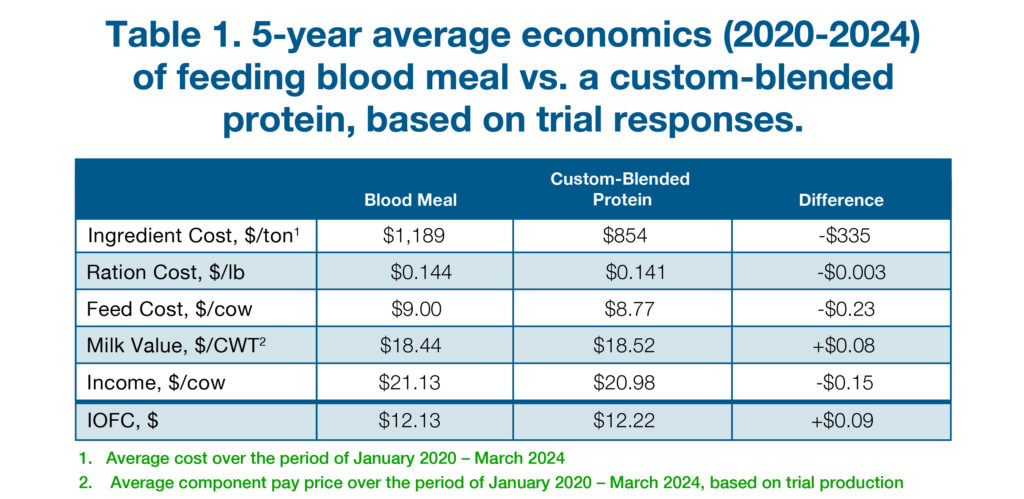With low milk protein prices appearing to be the norm for 2024, many producers and nutritionists are reluctant to invest in high-cost protein ingredients. However, protein feed ingredients aren’t just about driving milk protein – dietary amino acids and metabolizable protein can also be key drivers of milk fat and overall volume, as well as support immune function, reproduction and other important biological processes.
Instead of being reluctant to supplement protein ingredients, we should look at opportunities to improve which proteins we are choosing to use in the ration. This goal can include shifting the amino acid profile we’re trying to target, as well as ensuring we’re using high-quality ingredients backed by quality control and research. Animal-rendered protein blends fit very well into this situation, especially formulations that can be customized to the needs of the farm.
Traditionally, most nutritionists would target milk protein yield by supplying high amounts of lysine and methionine by utilizing rumen-protected amino acids, commodity ingredients like blood meal or a combination of both. However, a growing body of work in university research trials has demonstrated that amino acids such as methionine, branch chain amino acids such as leucine and isoleucine and even arginine can act as cell-signaling molecules to help drive milk fat and yield in addition to being building blocks of milk protein. These same signaling pathways are also involved in coordinating the cow’s metabolism and the immune system. Custom-blended proteins – like the bypass proteins Papillon Agricultural Company formulates – can utilize a variety of ingredients such as blood meal, red blood cells, feather meal, porcine meat and bone meal, plant proteins and rumen-protected amino acids to target specific amino acids and planes of nutrition.
To demonstrate the value of methionine, leucine, isoleucine and arginine, a custom animal-rendered protein blend was compared to commodity blood meal at a 5,000-cow dairy. The custom-blended protein was designed to deliver a similar level of metabolizable protein as commodity blood meal when included in the diet at an equal rate. However, the custom protein blend delivered approximately 7% less lysine and histidine and 20% more branch chain amino acids (isoleucine, leucine, valine), 30% more methionine and 50% more arginine than book value blood meal. This resulted in similar milk protein yields and energy-corrected dry matter efficiency, but slightly elevated milk fat concentration with the custom blended protein. Additionally, the custom protein blend would have averaged $300/ton less than commodity blood meal over the last five years, resulting in an IOFC increase of $0.09 per cow per day on average.
Custom protein blends also help decrease ration variability – another key goal producers and nutritionists should have when evaluating the proteins in their diets. The variability of animal-rendered byproducts, such as blood meal, has been well established as one of their major drawbacks. By using a diverse selection of ingredients, custom-blended proteins reduce the overall impact of variability of each of those ingredients on the complete diet. The quality control process that some custom protein blend manufacturers use also helps to further reduce this variability, ensuring that cows receive a more consistent diet, which translates into more consistent production and health of the animal. This process should include targeted selection of ingredient suppliers to limit location-to-location variability as well as routine analysis of important nutrients on both ingredients and finished products. These elements combine to elevate the value that high quality proteins contribute towards diet consistency and ensuring profitability, regardless of dairy market conditions.

Click here to view the original article on Farm Journal.





